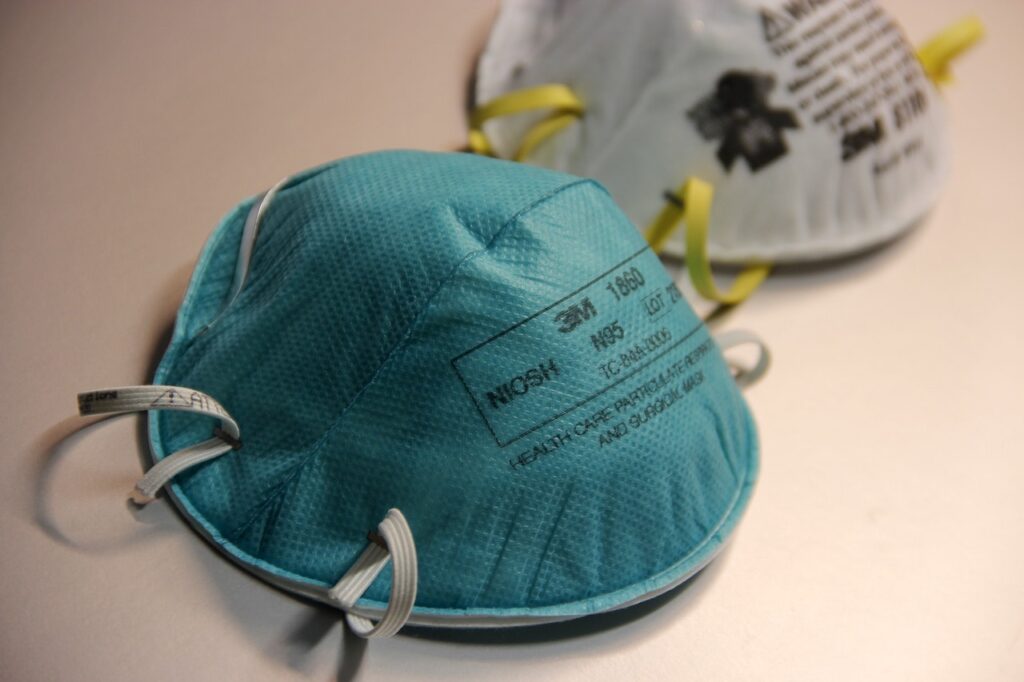It’s widely agreed upon that N95 respirators are about as reliable as it gets when it comes to protecting yourself from mold spores. N95s are a type of respirator known as particulate respirators, which means that they’re effective at protecting against harmful particles in the air as opposed to gasses or vapors. So, while you wouldn’t want to use an N95 respirator to protect yourself from a carbon monoxide leak, they work perfectly when you need to avoid breathing in tiny mold spore particles.
The Different Types of N95 Protection
Depending on the specifics of the mold problem you’re working on, there are three different levels of N95 protection you can choose from.
Minimum Respirators
If you’re working on a minor mold remediation task, such as scrubbing a small mold infestation out of your carpeting, a minimum-protection N95 respirator should work just fine. These are the smallest and least cumbersome type of masks, and they’re best used when cleaning the mold from a contaminated area of 10 feet or smaller.
Limited Respirators
Limited N95 respirators are a bit larger and offer air-purifying qualities. These face masks feature P100 filters and are ideal for mold-contaminated areas between 10 and 100 feet. For example, if you’re attempting to remove the mold from a large wall surface, you’ll likely want to go with a limited-protection N95 respirator.
Full Respirators
If you’re a homeowner taking on a do-it-yourself mold remediation project, the odds that it will require a full-protection N95 respirator are slim to none. These full-face respirators are typically only needed for cases of extreme mold contamination of areas larger than 100 feet. Of course, you can always use a full N95 respirator for a small job if you want to be extra cautious, but it isn’t necessary by any means.
When Else Should You Wear a Mold-Protection Mask?
Whenever you’re cleaning mold, it’s important to wear an effective form of breathing protection. However, that isn’t the only scenario in which you’d be wise to don an N95 respirator. If you find yourself working on any of the following tasks or jobs, it would be wise to protect yourself with a reliable mask.
- Building or renovating any house or structure
- Cleaning out a basement or crawl space
- Working on any construction project
- Installing or removing walls or flooring
- Stripping and removing wallpaper
- Cleaning up any type of messy kitchen or food-based environment
How to Properly Wear Your N95 Respirator
If you aren’t wearing your N95 respirator properly, it won’t be able to do its job of protecting you from mold particles effectively. The packaging of your mask should come with instructions on how to equip it the correct way, and you should always follow those guidelines as closely as possible. Before you use any respirator for a mold remediation job, though, it’s imperative to test how it fits your face.
To test the fit of your N95 mask, start by washing and drying your hands. Equip the respirator as instructed by the packaging, and verify that it fits securely on your face without digging into your skin or leaving any openings. If everything feels right, test it out by holding your hands up to the exterior of the respirator and exhaling. If you don’t feel any of your breath escaping, it means that the N95 is a snug fit, and you should be all set to go.


